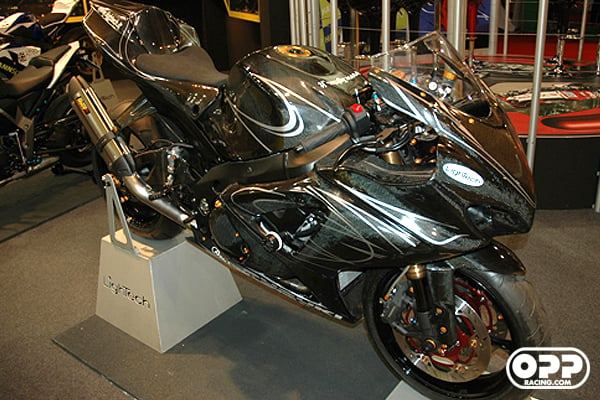In 1984 import tariffs were changed, causing the "V45" engine to be modified. Honda reduced the displacement to 698 cc by destroking the motor from 48.6mm to 45.4mm, added a tooth on the clutch gear to compensate for a loss of torque and changed the model name to VF700S. The VF700S models continued for only one more year.
The 750 cc "V45" engine produced 82 hp (61 kW) for 1982 models. 86 hp (64 kW) for 1983–1985 models. 76 hp (57 kW) for 700 models. The 1,100 cc "V65" engine, which was introduced in 1983, produced 121 hp (90 kW). Both were slightly detuned throughout the run of the first generation engine to cope with customs and EPA regulations. However, Honda reported the same horsepower figures throughout the whole generation even though the actual dyno-proven, detuned, figures showed up lower than advertised.
The engine's downfall was premature camshaft wear in some early models; both V45, 1000 and V65.[citation needed] In retrospect, the wear was caused by inadequate oil flow to the heads/cams driving for a long time on low engine speeds (under 3,000 rpm) and at cold start /engine warm-up procedure, non-accurate valve adjustment, and sometimes insufficient maintenance. But this came too late to save the engine's reputation. Honda itself at first denied there was a problem, then blamed inadequate or incorrect maintenance for the problem. They changed the maintenance interval, and developed and sold a special tool for 'proper' valve-lash adjustment. They eventually made changes to the design and production methods of the engine which eliminated the problem.

But it was too late. The first generation V4 was discredited, and the first V4 revolution failed. While Yamaha (The Vmax) and Suzuki (the Madura) had both responded to the Honda V4s with V4 engines of their own.
Eventually, Suzuki dropped the Madura, and the production of the Yamaha V-Max was continued for over 20 years.
Technology
V65 Sabre with Rifle fairing
The Sabres, especially the V45, were technology showcases for Honda. Not only did they feature revolutionary water-cooled, DOHC, 90-degree-V four-cylinder engines, but they also featured hydraulically-actuated, one-way clutches, TRAC anti-dive front suspension, Pro-link rear suspensions, and electronic speedometers and tachometers.
The original V45 came with a fibre-optic anti-theft system, self-canceling turn signals, built-in lap timer, and an electronic instrument cluster that included an LCD gear indicator that doubled as an electrical fault display.
Many of these electronic features were dropped from later V45s, and the VF700, though most of the mechanical features remained.
[edit] Brethren
Honda introduced the V4 engine in three motorcycles, representing the three types of street bike. The Interceptor was a sportbike, the Magna was a cruiser, and the Sabre a standard.
Both the Interceptor and Magna continued in production for decades after the Sabre was discontinued.
[edit] Speed
In 1983, Cycle magazine reported that Jay Pee-Wee Gleason made a 10.92 second, 124.82 mph (200.88 km/h) quarter-mile run with a V65 Magna,[citation needed] which had the same engine as the V65 Sabre.
The V65 Magna appeared for several years in the Guinness book of world records as the "fastest production motorcycle" with a calculated (but not real) top speed of over 160 mph (260 km/h).[citation needed]
According to Honda: "the mighty V65 Sabre could launch from a standstill to 50 miles per hour in just 2.31 seconds!"[citation needed]
[edit] V-twin Sabre
Honda resurrected the Sabre name for a model of their Shadow v-twin cruisers. Inside the context of motorcycles, the v-twin Sabre has nothing in common with the V4 Sabre.
 Honda Grand output in 2000 at abis kinclong style modification. Why, because this grand honda modified with painted chrome yellow and chrome body in full. shock mounted on the right with the addition of front disc rear plus double front calipers rear. The used tires are worn tires drag racing. Alloy wheel spokes are used front and rear tire wheel disc using orbitals. At the time of modification of the motor in Jepara contest yesterday, he also entered the contest MODIF in Jepara. But unfortunately not yet a winner of a contest that modification.
Honda Grand output in 2000 at abis kinclong style modification. Why, because this grand honda modified with painted chrome yellow and chrome body in full. shock mounted on the right with the addition of front disc rear plus double front calipers rear. The used tires are worn tires drag racing. Alloy wheel spokes are used front and rear tire wheel disc using orbitals. At the time of modification of the motor in Jepara contest yesterday, he also entered the contest MODIF in Jepara. But unfortunately not yet a winner of a contest that modification.





































